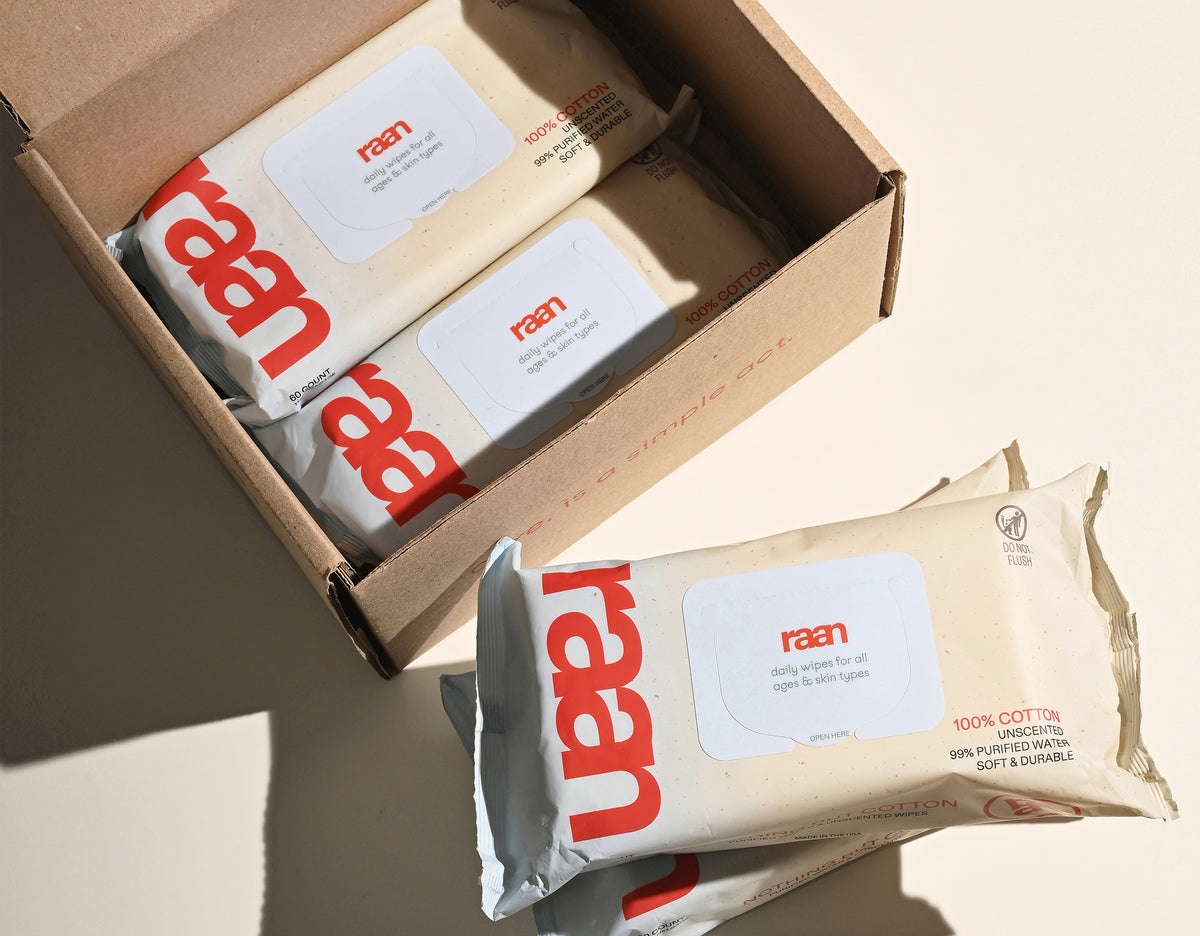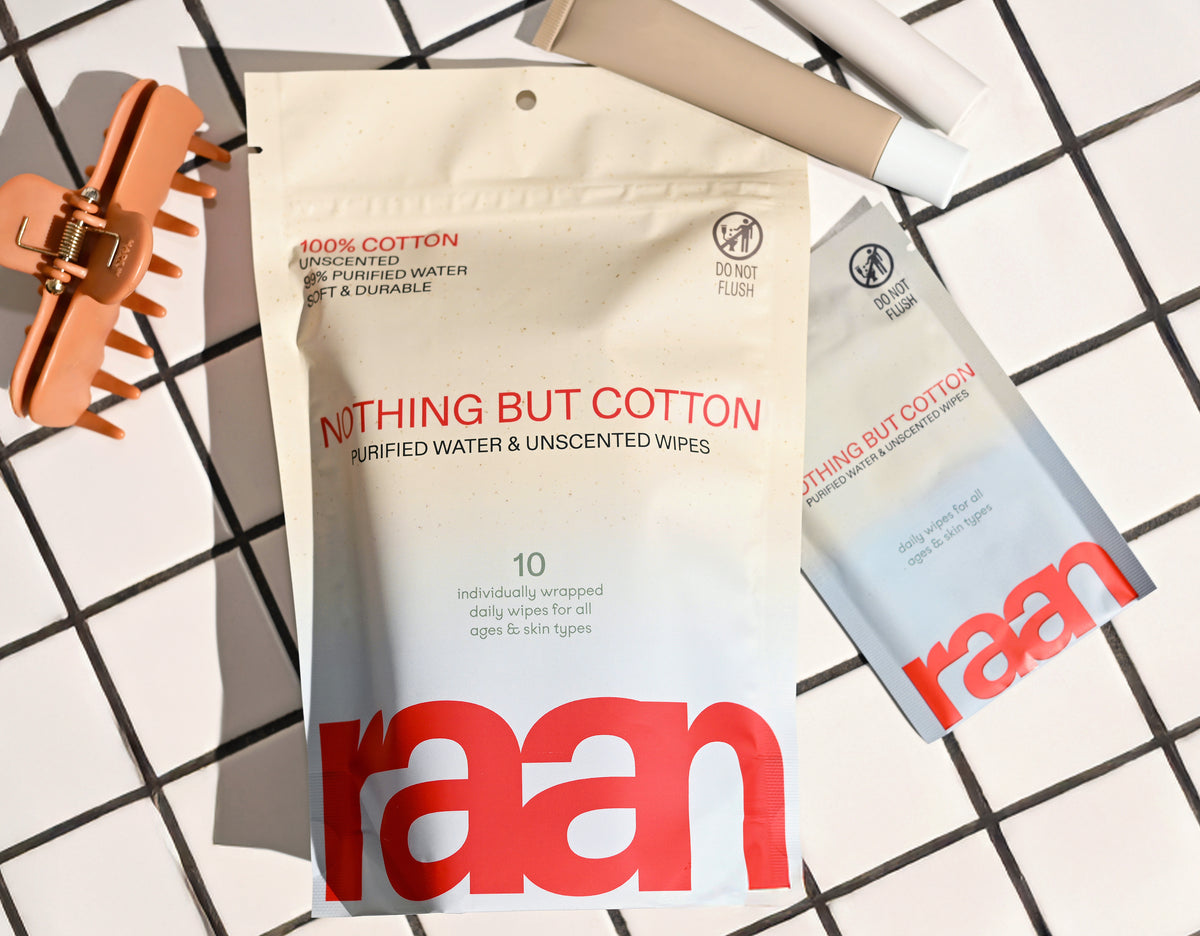Key Takeaways
- Consumers seek honest guidance on safe baby wipes for their families.
- Many baby wipes claim to be clean but contain plastic fibers and synthetic fragrances.
- Ingredient transparency is often lacking in the baby wipes market.
- The variety of products available can be overwhelming for shoppers.
- Understanding true safety in baby wipes requires careful evaluation beyond marketing claims.
Table of Contents
- What "Consumer Reports Baby Wipes" Actually Means, And Why It Matters
- What Goes Into a Baby Wipe: Ingredient Science and Safety
- Sensitive Skin and Safety: What the Science Shows
- Ingredient Transparency and Third-Party Safety Testing: Who Can You Trust?
- Comparing Baby Wipes by Consumer Reports Metrics: What Distinguishes "Best" from "Rest"
- Biodegradability and Environmental Impact: The Hidden Cost of Traditional Wipes
- Real-World Use Cases: Everyday Wipe Moments for Every Family
- Storing and Handling Wipes for Maximum Freshness and Safety
- Solving Common Baby Wipe Problems: Practical Answers for Real Life
The Real Consumer Reports on Baby Wipes: Safe, Honest Choices for Every Body
When you search for consumer reports baby wipes, you're looking for one thing: honest guidance on what's actually safe for your family. After years of navigating misleading "clean" claims and mystery ingredients, we get it. The wipe aisle is overwhelming, packed with products that promise purity but deliver plastic fibers, synthetic fragrances, and ingredients you can't pronounce. The Only Unbleached, 100% Cotton Baby Wipe for Sensitive Skin offers a truly transparent and safe alternative for families who want to avoid hidden irritants.
Here's what really matters: the material touching your skin, the ingredients doing the cleaning, and the transparency behind every claim. Real safety comes from unbleached, 100% cotton and EWG-verified formulas, not marketing buzzwords. Unbleached, 100% Cotton Pocket Wipe for Sensitive Skin is perfect for on-the-go families who need a gentle, trustworthy option wherever life takes them.
You're searching for consumer reports baby wipes because you need trusted, independent evaluation of what's safe for daily use. The stakes are real: the average family uses 2,500+ wipes per year, with each one making direct skin contact during vulnerable moments, diaper changes, face cleaning, sticky finger rescues. If you're interested in a broader overview of the category, you can read more about baby wipes and what sets the safest options apart.
Independent testing organizations like Consumer Reports evaluate wipes on safety, effectiveness, and ingredient transparency. They flag harmful chemicals, test for skin irritation, and call out vague labeling. Most importantly, they cut through marketing claims to reveal what's actually in the products touching your family's skin every single day.
The personal stakes go beyond babies. Sensitive skin, eczema-prone adults, pet owners, and anyone who values clean ingredients deserve wipes that work without compromise. That's where material science meets real life, and why unbleached, 100% cotton with just five EWG-verified ingredients changes everything.
What Goes Into a Baby Wipe: Ingredient Science and Safety
The base material determines everything. Most conventional wipes use plastic-blend fabrics (rayon, polyester) treated with bleach for that bright white look. These synthetic fibers can harbor bacteria, break down into microplastics, and irritate sensitive skin. Unbleached, 100% cotton preserves the natural antimicrobial properties of cotton while staying soft and biodegradable.
| Ingredient | Conventional Wipes | Raan Wipes | Purpose |
|---|---|---|---|
| Base Material | Plastic-blend, bleached | Unbleached, 100% cotton | Gentle cleansing surface |
| Preservatives | Phenoxyethanol, parabens | Sodium benzoate, potassium sorbate (food-grade) | Prevent bacterial growth |
| Moisturizers | Synthetic emollients | Organic aloe | Skin conditioning |
| Fragrance | "Fragrance" (undisclosed blend) | None | Scent (unnecessary) |
| pH Balance | Various synthetic acids | Citric acid | Skin-compatible pH |
Raan's five-ingredient formula eliminates the guesswork: purified water (99%), food-grade preservatives (sodium benzoate, potassium sorbate), skin-conditioning ethylhexylglycerin, organic aloe, and citric acid for pH balance. Every ingredient serves a clear function, with EWG verification confirming safety for daily use on the most sensitive skin.
What's missing matters just as much: no plastic fibers, no synthetic fragrances, no bleach, no microplastics. Consumer Reports consistently flags these additives for skin irritation and environmental persistence. When you can pronounce every ingredient and understand its purpose, you're holding real transparency.
Sensitive Skin and Safety: What the Science Shows

Baby skin is 30% thinner than adult skin, with a developing acid mantle that's easily disrupted. But sensitivity isn't limited to infants, eczema affects 31.6 million Americans, and contact dermatitis from personal care products is increasingly common. The right pH (around 5.5) supports the skin barrier; harsh ingredients or synthetic fragrances can trigger flare-ups that last days.
Clinical safety testing reveals the difference between marketing claims and real protection. "Hypoallergenic" has no regulatory definition, but EWG Verified means rigorous screening for known allergens and irritants. "Dermatologist-tested" can mean a single doctor tried the product once; "clinically tested" requires controlled studies with documented results.
Ingredient Transparency and Third-Party Safety Testing: Who Can You Trust?
Full ingredient disclosure isn't just nice-to-have transparency, it's your shield against hidden chemicals that could harm your family. When brands list every single ingredient with its purpose, they're showing confidence in their formula. When they use vague terms like "natural fragrance" or "proprietary blend," they're hiding something.
Independent lab testing catches what brands won't tell you. Third-party labs routinely find 1,4-dioxane contamination in "gentle" wipes, formaldehyde in "natural" products, and phthalates in items labeled "fragrance-free." These aren't manufacturing accidents, they're the result of cheap processing and undisclosed ingredients. For more details on this contaminant, see this consumer fact sheet on 1,4-dioxane.
| Certification | What It Tests | Why It Matters |
|---|---|---|
| EWG Verified | Every ingredient for safety, contamination, transparency | Strictest consumer safety standard available |
| National Eczema Association | Irritant potential, allergen screening | Safe for most sensitive skin conditions |
| Cruelty Free | No animal testing at any production stage | Ethical assurance with safety integrity |
| Natural Cotton Seal | Fiber purity, processing methods | No synthetic fibers or harsh bleaching |
Raan's approach eliminates the guesswork entirely. Every ingredient serves a clear purpose: purified water for gentle cleansing, organic aloe for moisture, food-grade preservatives for safety. No mystery chemicals, no proprietary blends, no "trade secrets" that put your family at risk. Our EWG Verified status means every batch gets tested for over 2,500 potential contaminants.
Comparing Baby Wipes by Consumer Reports Metrics: What Distinguishes "Best" from "Rest"
Consumer reports baby wipes testing focuses on six core areas: ingredient safety, cleaning effectiveness, material quality, skin compatibility, environmental impact, and honest labeling. The highest-rated wipes excel across all categories, not just one or two marketing claims.
Material matters more than most parents realize. Plastic-based wipes might feel soft initially, but they don't breathe like natural fibers and can trap moisture against skin. Cotton wipes, especially unbleached varieties, provide better absorbency and break down naturally without leaving microplastic residue. If you're curious about how popular brands stack up, check out this analysis on are kirkland baby wipes safe.
| Feature | Standard Wipes | Premium "Natural" Wipes | Raan Cotton Wipes |
|---|---|---|---|
| Base Material | Plastic blend fibers | Plant-based rayon | Unbleached, 100% cotton |
| Ingredient Count | 15-25 ingredients | 8-12 ingredients | 5 ingredients total |
| Third-Party Verified | Rarely | Sometimes | EWG Verified |
| Preservative Type | Synthetic chemicals | Mixed synthetic/natural | Food-grade only |
| Biodegradability | 100+ years | 1-5 years | Months in compost |
The standout difference comes down to intentional simplicity. While other brands add dozens of ingredients to address problems created by their base formula, Raan starts with materials that work naturally. Unbleached cotton needs fewer additives because it's gentler from the start. Food-grade preservatives provide safety without synthetic residue.
For sensitive skin conditions like eczema or diaper rash, dermatologists consistently recommend fragrance-free, minimal-ingredient formulas. The fewer variables in contact with compromised skin, the lower the risk of irritation or allergic response. For a curated selection of options, explore the mess-ready pack for families who want to be prepared for any situation.
Biodegradability and Environmental Impact: The Hidden Cost of Traditional Wipes

Most baby wipes contain plastic fibers that persist in landfills for over 100 years, breaking down into microplastics that contaminate soil and water. Even wipes labeled "biodegradable" often contain plastic backing or synthetic binders that prevent true decomposition.
The environmental cost extends beyond disposal. Plastic-based wipes require petroleum-derived materials, energy-intensive manufacturing, and often travel thousands of miles before reaching your home. The packaging amplifies this impact, hard plastic dispensers and multi-layer pouches create unnecessary waste.
Environmental Reality Check: A family using conventional wipes generates approximately 2,000 plastic wipes annually. These persist in the environment for generations, contributing to the 300 million tons of plastic waste produced globally each year.
Raan wipes address environmental impact at every stage. The unbleached cotton biodegrades completely in months, not decades. Our packaging uses 70% less plastic than standard wipes for the starter set, making it easier for eco-conscious families to reduce their footprint.
Real-World Use Cases: Everyday Wipe Moments for Every Family
Wipes extend far beyond diaper changes. They become essential tools for managing life's daily messes, sticky toddler hands after snacks, quick face refreshes during busy mornings, cleaning pet paws after walks, or sanitizing surfaces during travel.
First-Time Frankie keeps wipes in three locations: nursery changing station, diaper bag, and kitchen counter. She discovered that gentle cotton wipes work perfectly for cleaning her newborn's face after feeding without causing irritation around sensitive mouth areas.
Busy-but-Intentional Bri uses wipes for quick refreshes between meetings, removing makeup smudges, cleaning hands after lunch, or freshening up before important calls. The unscented formula doesn't interfere with her skincare routine or trigger her mild rosacea.
Eco-Everything Elise replaced multiple cleaning products with one pack of cotton wipes. She uses them for wiping down her toddler's high chair, cleaning car seats, and handling messy art projects. The biodegradable material aligns with her zero-waste goals. For more recommendations, see this guide to the best baby wipes for sensitive skin.
Proper portioning maximizes effectiveness: one wipe handles sticky fingers, two wipes clean a toddler's face and hands after meals, and three wipes tackle larger messes like spilled snacks or muddy shoes.
The key is strategic placement. Keep one pack where you change diapers, another in your daily bag, and a third in the kitchen or car. This prevents overuse while ensuring clean-up tools are always within reach during those inevitable messy moments.
Storing and Handling Wipes for Maximum Freshness and Safety
Proper storage prevents contamination and preserves the gentle preservative system. Store unopened packs at room temperature in dry locations, away from direct sunlight and heat sources like radiators or car dashboards.
Heat degrades preservatives and creates conditions for bacterial growth. Wipe warmers, while convenient, can compromise safety by maintaining temperatures that encourage microbial activity. The food-grade preservatives in quality wipes work optimally at room temperature.
Storage Checklist:
- Keep in original packaging until use
- Store between 60-75°F
- Avoid bathroom storage (humidity issues)
- Clean hands before handling
- Reseal immediately after each use
- Use within 30 days of opening
Contamination prevention requires consistent habits. Always use clean hands when removing wipes, and avoid letting children handle the pack opening. Don't share packs between diaper bag, car, and home, cross-contamination introduces bacteria from different environments.
Signs of compromised wipes include unusual odor, slimy texture, or visible mold growth. Discard immediately if any of these occur. If wipes become dry, don't attempt to rehydrate them, the preservative balance becomes compromised, creating safety risks.
Solving Common Baby Wipe Problems: Practical Answers for Real Life

Skin reactions require immediate assessment and a gentle approach. If irritation occurs, stop using the current wipes and gently clean the affected area with plain water. Pat the skin dry with a soft cloth and avoid applying any new products until the area has calmed. If symptoms persist or worsen, consult a healthcare professional. For ongoing sensitive skin needs, choose wipes with minimal, transparent ingredients and no added fragrances or harsh preservatives.
Frequently Asked Questions
What ingredients should I avoid in baby wipes to ensure they are safe for sensitive skin?
Avoid synthetic fragrances, plastic fibers, and harsh preservatives that can irritate delicate skin. Look for wipes with simple, EWG-verified ingredients like purified water, gentle moisturizers, and food-grade preservatives to minimize the risk of irritation.
How does the material of a baby wipe, such as unbleached 100% cotton versus synthetic fibers, impact safety and environmental effects?
Unbleached, 100% cotton wipes are free from plastic fibers, reducing skin irritation and environmental pollution. Synthetic fibers often shed microplastics that linger in ecosystems, while cotton is biodegradable and gentler on sensitive skin, making it a safer, more sustainable choice.
Why is ingredient transparency and third-party safety testing important when choosing baby wipes?
Transparency lets you know exactly what’s in the wipes, avoiding hidden irritants or unnecessary additives. Third-party testing verifies safety claims independently, ensuring the product is genuinely safe for sensitive skin rather than relying on marketing buzzwords.
What distinguishes the safest baby wipes from others according to Consumer Reports evaluations?
The safest wipes prioritize clear ingredient lists, avoid plastic fibers and synthetic fragrances, and undergo rigorous testing for skin irritation. Consumer Reports looks for products that combine effective cleaning with honest labeling and minimal environmental impact.






